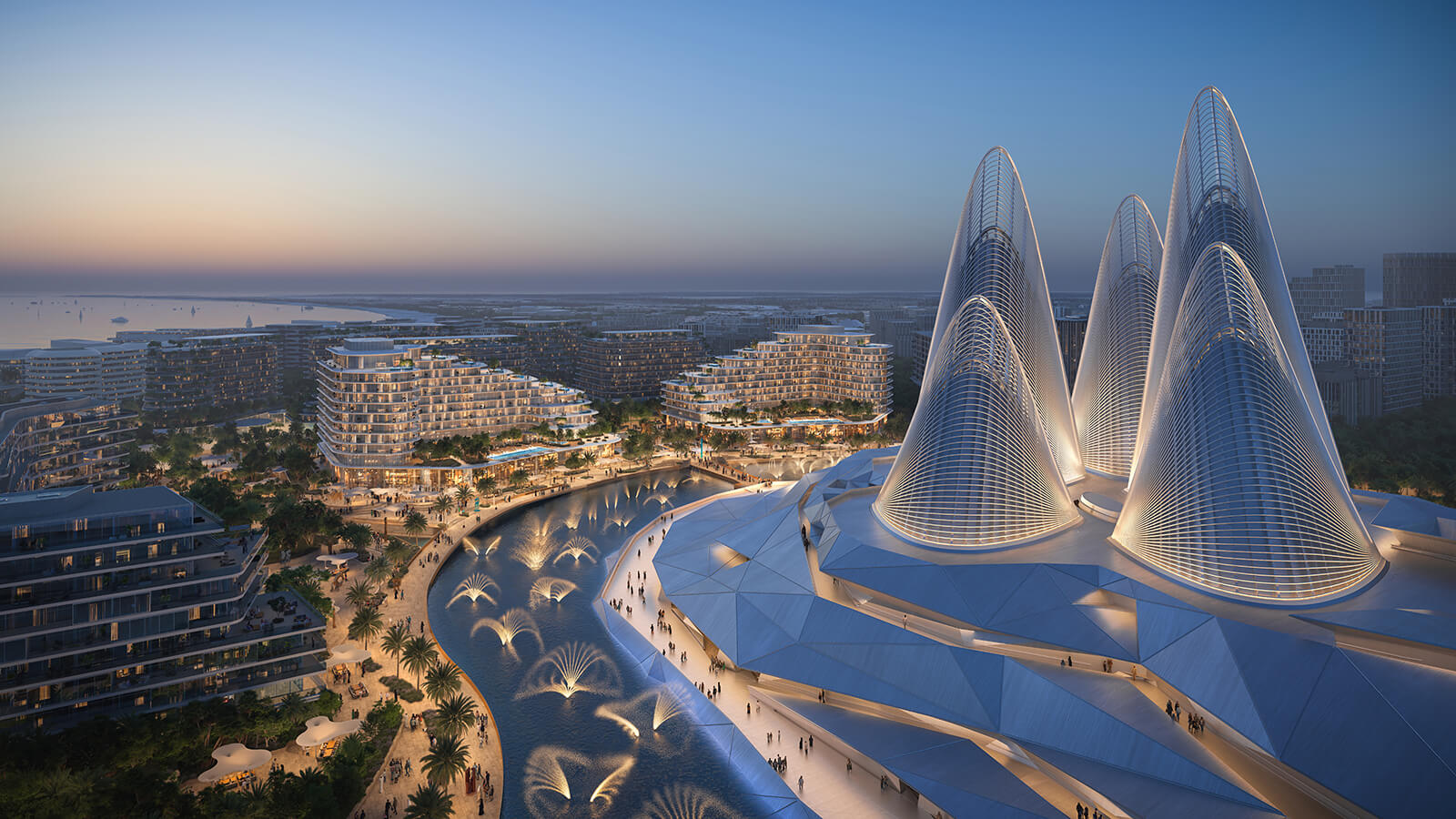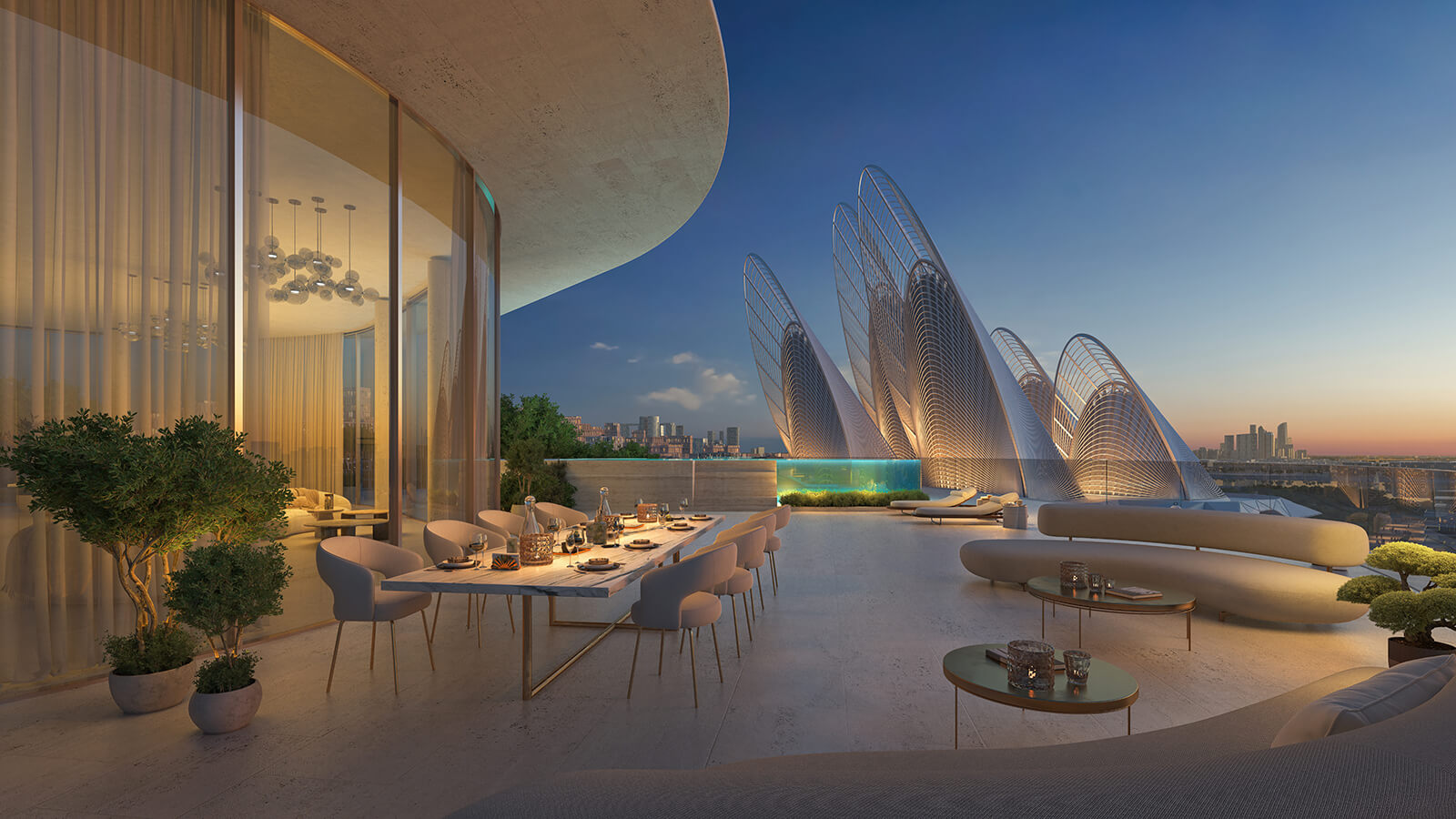Located in Abu Dhabi's Saadiyat Cultural District, Aldar's Mandarin Oriental Residences are a shining jewel designed to be the epitome of elegance and premium living. Designed by renowned Dutch architects Bjarke Ingels Group (BIG), the structure rises gracefully from the surrounding landscape, its staccato rooflines and clean contours reminiscent of the undulating sands of Mamsha Beach. It's an environment that feels alive; Luxury and artistry come together in the designs of a veritable who's who of the architectural world. The island aspires to become a utopia for the upscale segment; a popular cultural, residential and recreational destination in the United Arab Emirates, located just off the coast of Abu Dhabi.
The name “Saadiyat,” which means “happiness” in Arabic, reflects the island’s goal of creating an environment that complements the community with luxury and exclusivity. On the island, rapid urban development has created a choreography of architectural elements that draw the eye to the expansive vistas of the Zayed National Museum and the calm waters of the Gulf beyond. The Louvre Abu Dhabi, designed by Jean Nouvel, and the soon-to-be-completed Guggenheim, designed by Frank Gehry, along with the Zayed National Museum, form a triumvirate of cultural brilliance.

In the context of such frenetic architectural dreams, the residential project for Aldar takes the form of wave-like dunes connected to Abu Dhabi's two essential natural elements – sand and water. Although the morphology is monumental, the design appears almost reserved, in reference to the numerous cultural buildings. Where previously BIG's residential architecture projects such as Sneglehusene Housing and 79&PARK relied on generosity, the project fades into the background in the hedonistic desert landscape and makes room for the community through its planning. The Middle East's rapid urban change in some ways reflects Bjarke Ingels' concept of “hedonistic sustainability,” in which ambitious development is balanced with environmentally conscious design. Places like Saadiyat Island embody this duality, where environmental protection and opulent living aim to coexist, although not without contradictions.
The design for Mandarin Oriental Residences, as with many of the company's previous residential developments, includes identical stacked units that provide privacy and openness to each resident while connecting to their respective community context. Each private residence features an outdoor terrace, expansive rooms and floor-to-ceiling windows. The open courtyard and rising terraces on either side allow natural light into the main public area. But in Saadiyat, design finds a subtler rhythm, reflected in its concern for community.

The true essence of the development lies in its community ethos. Mandarin Oriental's signature lifestyle permeates every corner of the project. A spa and wellness retreat promises relaxation, and community is expressed in the common spaces – a chic residents' lounge, a private theater and intimate game rooms. Designed by New York-based designer Lillian Wu, the interiors are a study in tactile warmth – earthy woods and soft, diffused light frame spaces imbued with meditative calm.
Each room not only invites you to live, but also to feel a sense of belonging, thereby promoting an atmosphere of connection between residents. Aldar's vision is inextricably linked to the larger narrative of Saadiyat Island. BIG, along with Wu, presents a somewhat conventional vision of what it means to live at the intersection of art, popular culture and nature. Like most of these developments, it is intended to be both outward- and inward-looking, encouraging its residents to find inspiration both in the outside world and within themselves.

The beautifully landscaped gardens lead to terraces where the skyline appears to ripple like water over the horizon. Here, luxury aims to be fundamentally contextual – a conversation between the individual and the collective. A tapestry of luxury, culture and sustainability in the design of Mandarin Oriental Residences aims to enhance Abu Dhabi's architectural landscape and elevate living standards through a rich experience that combines active cultural participation with tranquil getaways. As we move toward more and more disasters and rethink architecture's responsibility to intervene on issues like resource parity or climate crisis, Ingels' vision, true to his design philosophy, could perhaps show how architecture can balance human endeavor with the natural beauty of its surroundings . It is a fitting addition to the island's built environment, skirting the line between built heritage and a future defined by technocratic solutions.

(Text by Arryan Siingh, STIR intern)
